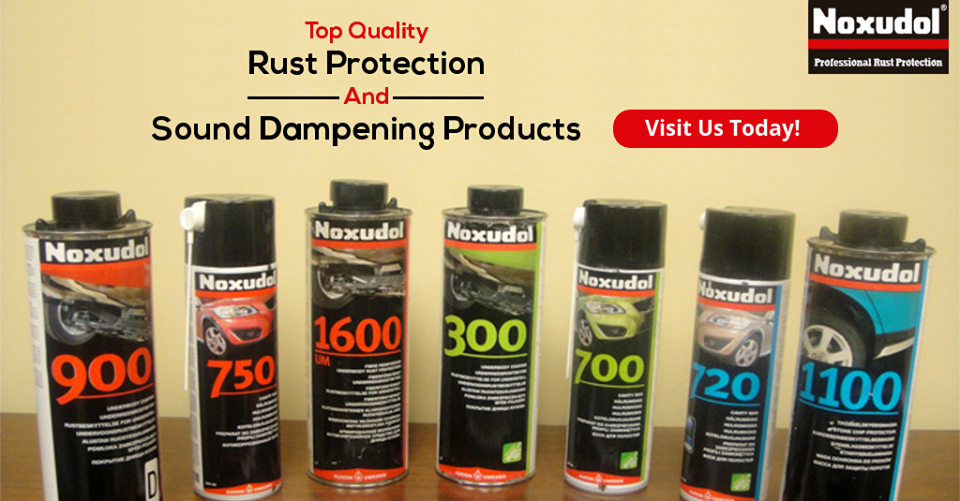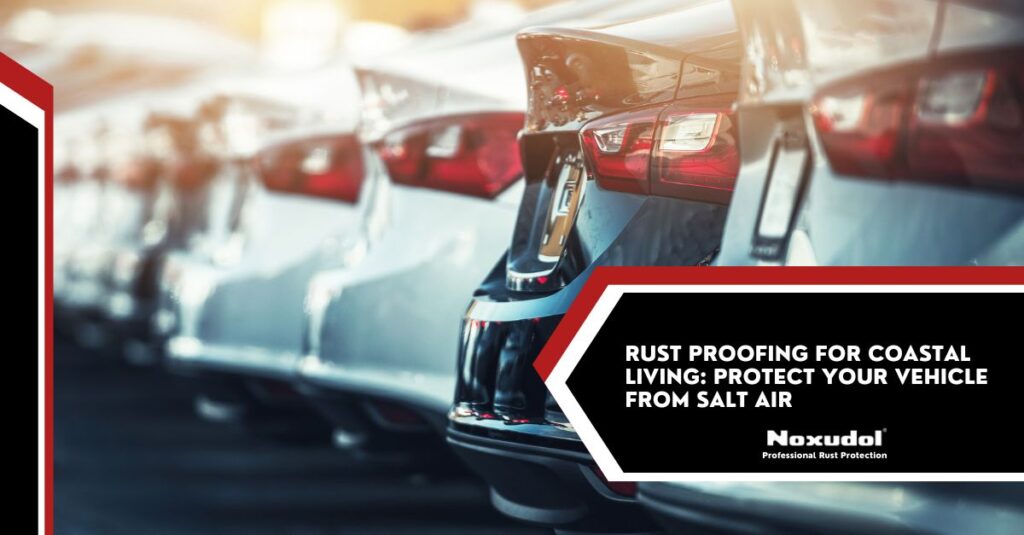Living near California’s beautiful coastline comes with incredible perks—stunning ocean views, perfect weather, and endless beach days. But there’s one major downside that many coastal residents discover too late: the relentless battle against vehicle rust. Using a high-quality rust proofing spray can help protect your car from salt air, high humidity, and beach road conditions that create the perfect storm for corrosion.
If you’ve noticed orange spots appearing on your vehicle or want to prevent them before they start, understanding proper rust proofing techniques is essential. The good news? With the right rust proofing spray and preventive measures, you can keep your vehicle looking and running like new, even in the harshest coastal conditions.
This guide will walk you through everything you need to know about protecting your vehicle in high-humidity, salt-air environments—from understanding how rust develops to choosing the most effective protection methods.

Why Coastal Areas Are Rust Magnets
Salt air doesn’t just affect your vehicle’s exterior paint. The microscopic salt particles suspended in coastal air settle into every crevice, crack, and joint of your vehicle. When combined with moisture from humidity or morning dew, these particles create an electrochemical reaction that rapidly accelerates the corrosion process.
Beach roads present additional challenges. Sand mixed with salt creates an abrasive compound that gets kicked up by your tires, coating your vehicle’s undercarriage. This mixture acts like sandpaper, wearing away protective coatings and exposing bare metal to the elements.
The damage isn’t always visible from the outside. While you might notice surface rust on door frames or around wheel wells, the most serious corrosion often happens where you can’t see it—on the undercarriage, inside frame rails, and within structural supports.
How Rust Attacks Your Vehicle from Below
Most vehicle owners focus on what they can see, but rust’s most devastating work happens underneath your car. Your vehicle’s undercarriage faces constant exposure to road salt, moisture, and debris, yet it often receives the least attention during regular maintenance.
Frame Rails and Structural Components
Your vehicle’s frame provides the backbone that keeps everything together. Salt and moisture work their way into the hollow sections of frame rails through drainage holes, creating trapped pockets of corrosive material. Once inside, the corrosion process accelerates in these enclosed spaces where air circulation is limited.
Frame rust doesn’t just affect appearance—it compromises your vehicle’s structural integrity. Advanced corrosion can weaken critical support points, potentially creating safety hazards during collisions or normal driving conditions.
Wheel Wells and Suspension Components
Wheel wells collect road debris, salt, and moisture while providing limited drainage. This creates an ideal environment for rust to develop on suspension components, brake lines, and the inner wheel well surfaces. The constant movement of suspension parts can also crack protective coatings, exposing fresh metal to corrosive elements.
Exhaust Systems and Heat Shields
Exhaust components operate at high temperatures, which can accelerate the corrosion process when salt and moisture are present. Heat shields, designed to protect other components from exhaust heat, often develop rust holes that compromise their effectiveness and create potential fire hazards.
The Science Behind Effective Rust Proofing Spray Protection
Not all rust prevention methods work equally well in coastal environments. Understanding what makes certain products more effective can help you make informed decisions about protecting your vehicle.
Traditional oil-based undercoatings were once popular, but they have significant drawbacks in high-humidity environments. These products can trap moisture against metal surfaces and may drip off over time, leaving areas unprotected.
Modern rust proofing spray formulations address these limitations through advanced chemistry. Solvent-free products eliminate the harsh chemicals that can damage rubber components and wiring. Instead of simply coating surfaces, the best rust proofing products penetrate into metal pores and create lasting protection that moves with your vehicle’s components.
Waxy Film Rust Proofing Spray Protection
Professional-grade rust proofing creates a waxy film barrier that provides several advantages over traditional methods. This protective layer remains flexible, preventing cracking that could allow moisture penetration. The waxy consistency also helps the product stay in place, even when subjected to road debris and car washes.
The film continues working long after application by creating a moisture barrier while allowing trapped moisture to evaporate. This breathing action prevents the moisture entrapment problems common with some coating systems.
Noxudol: European-Engineered Protection for American Roads
European automotive manufacturers have dealt with harsh winter conditions and road salt for decades, leading to advanced rust protection technologies. Noxudol represents the pinnacle of this development, offering solutions specifically engineered for motor vehicles operating in challenging environments.
Key Features of Professional Rust Proofing Spray
Noxudol’s solvent-free formulation eliminates the risk of damage to rubber seals, gaskets, and electrical components that can occur with harsh chemical-based products. This makes it safe for comprehensive undercarriage application without masking sensitive areas.
The waxy film barrier provides long-lasting protection that doesn’t require frequent reapplication. Unlike some products that wash away or wear off quickly, this protection maintains its effectiveness through multiple seasons of exposure to salt air and road conditions.
The product’s design specifically addresses motor vehicle applications, taking into account the unique challenges of protecting complex mechanical systems while maintaining proper operation of moving parts.
Application Strategy for Maximum Rust Proofing Spray Protection
Effective rust proofing requires more than just spraying product under your vehicle. Strategic application ensures complete coverage while avoiding interference with vehicle operation.
Timing Your Protection
The best time to apply rust proofing is when your vehicle is clean and dry. If you live near the coast, plan application during periods of lower humidity when possible. This allows the product to properly adhere and cure before exposure to moisture.
New vehicles benefit from immediate protection before any corrosion begins. For older vehicles, address any existing rust spots before applying protective coatings to prevent continued corrosion underneath the protection layer.
Critical Areas to Address
Focus extra attention on areas where water and debris tend to collect. This includes the rear areas behind wheels, around fuel lines, and in door frame channels. These locations often show the first signs of rust problems and benefit from thorough protection.
Don’t forget about areas that seem protected but actually trap moisture. Overlapping metal joints, bolt holes, and drainage channels need specific attention to prevent hidden corrosion problems.
Professional vs. DIY Application
While some rust proofing products are designed for consumer application, professional installation offers several advantages. Trained technicians understand proper application techniques and have access to equipment that ensures complete coverage in hard-to-reach areas.
Professional application also typically includes inspection services to identify existing problem areas and recommend additional treatments if needed.
Long-Term Maintenance and Inspection
Rust proofing isn’t a one-time solution—it requires ongoing attention to maintain maximum effectiveness. Regular inspection helps identify areas where reapplication might be needed before serious problems develop.
Annual Inspection Points
Check the undercarriage for any areas where the protective coating appears thin or damaged. Pay particular attention to areas that experience high wear from road debris or mechanical contact.
Examine visible frame sections and suspension components for any signs of rust breakthrough. Early detection allows for spot treatment before widespread corrosion develops.
Reapplication Schedule
Most professional rust proofing treatments provide protection for multiple years, but annual touch-up applications extend this protection indefinitely. Focus reapplication efforts on areas that show the most wear or exposure.
Keep detailed records of treatment dates and areas covered to ensure consistent protection over time.
Your Next Steps for Rust-Free Coastal Driving
Protecting your vehicle from coastal corrosion doesn’t have to be complicated, but it does require the right products and proper application. Professional-grade rust proofing spray provides the foundation for long-term protection, while regular maintenance ensures continued effectiveness.
Start by thoroughly cleaning your vehicle’s undercarriage to remove existing salt and debris. Consider professional rust proofing application for comprehensive coverage, especially if you’re not comfortable working under your vehicle. Schedule annual inspections to monitor the effectiveness of your protection and identify areas needing attention.
Remember that prevention costs far less than repair. The investment in quality rust proofing pays for itself by maintaining your vehicle’s value and preventing expensive structural repairs down the road.


